By Karen Di Piazza
For millions of people considered “mid-level” or “lower-echelon” personnel in companies for which they work, the thought of being able to fly on the company jet, or to be able to book a general aviation chartered aircraft, at best was a daydream. Fifteen years ago, private aircraft was a hush-hush subject, unless you were a CEO, a member of the board of directors, a family member, or a high-priced company consultant or valued customer. You never knew your company owned an aircraft; you certainly never saw one.
But thanks to Enron executives showing up in chartered jets, attending federal hearings (still taking place), America’s workforce became quite familiar with the terms “private general aviation” and “quarterly reports.” Many employees of publicly held companies are also stockholders. Shortly thereafter, other scandalous woes became TV’s top ratings, again exposing financial fraud, but also showing executives’ use of private jets. As private jets were also in the limelight, more people became aware of them. GA was portrayed as a choice mode of transportation; aircraft manufacturers of business jets had something to celebrate—higher production rates.
Companies’ senior management and mid-level teams began questioning why they were being squished into coach-class seats on commercial airliners while others were flying on GA aircraft—for so-called business reasons, too. Then came along the Sarbanes-Oxley Act of 2002, which forced CEOs and CFOs to get more involved in the running of publicly held companies. These top executives are now “required” to personally sign their names on the dotted line of quarterly and annual reports.
The Sarbanes-Oxley clean-sweep attempt made by the Securities and Exchange Commission, along with major stock exchanges, imposed extreme regulatory governance—something that hadn’t been seen in over 70 years. Companies were forced to have more accountability for the bottom line, and to make full disclosures about the use of private aircraft. Across the nation, we started to hear about a new breed of CEO; not only did they embrace GA for themselves, but many of them also found that using GA for a broader range of personnel levels increased the bottom line.
The airline industry has never fully recovered since 9/11. By 2003, more companies were committed to using GA. As a result, the hottest trend in business travel is finding new ways to use GA; CEOs are finding out that goal can be accomplished by integrating both the corporate aviation and travel departments.
The mindset to use GA may be there, but technology to support the rapid growth of overall company use of GA isn’t. Because there hasn’t been a software program developed to combine the use of commercial and GA flights at the same time, companies are developing their own programs. Some companies have figured out how to allow personnel to book their own seats on the company jet or request their own ad hoc charter aircraft.
Fifty percent of companies that utilize GA aircraft don’t have in-house aviation departments. For the corporate travel executives of those companies, utilizing GA and its many options and comprehending its intricacies is a difficult task.
Sue Swenson is an exception to the rule when it comes to travel managers. She’s a member of both the National Business Aviation Association and the National Business Travel Association. As the travel team leader for EnCana Corp., she’s a firm believer that company personnel should be able to utilize company-owned aircraft or various GA chartered aircraft.
Swenson believes that because of increased check-in and wait times, delays requiring more connections with commercial carriers, the hub-and-spoke system is pushing companies to use GA.
“And with infrequent or no service to remote areas, price increases, and safety and security concerns, this has contributed to a resurgence of chartering corporate aircraft,” she said.
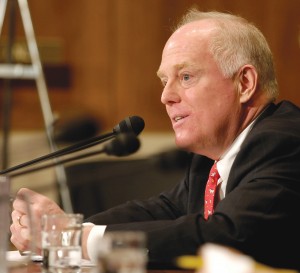
James K. Coyne, president of the National Air Transportation Association, said commercial airlines simply aren’t as dedicated to or interested in the business traveler as they were 20 years ago.
James K. Coyne, president of the National Air Transportation Association, believes that commercial airlines have lost appeal. He says NATA has a “how-to-charter” program that company travel managers can use.
“Commercial airlines simply aren’t as dedicated to or interested in the business traveler, as they were 20 years ago,” he said. “GA is the way of the future for business travel. GA is a hassle-free, point-to-point, on demand, customized, secure, dependable and much more affordable option than most people imagine.”
He said that GA becomes very affordable, especially if you fill all the seats on an aircraft.
“I truly believe that business use of GA will increase by 300 percent in the next 10 years, if not more,” Coyne said. “It’s simply a question of efficiency. It makes people—the most important asset of any business—twice as efficient and effective whenever they need to travel by air.”
Swenson believes there isn’t any reason that aviation and travel departments can’t be integrated. As for taking a proactive approach in using GA aircraft, and who’s allowed to fly on the corporate jet when there are extra seats, she says EnCana has no policy.
“In our situation, no policy is required; very few travelers would opt for a commercial flight when they could fly on a corporate aircraft,” she said. “Our in-house system provides travelers access to booking their own seats on existing corporate schedules or requesting an ad hoc (charter) aircraft. The travel coordinators, trained both commercially and corporately, always provide ad hoc seat options, should they exist.”
Susan Gurley, executive director of the Association of Corporate Travel Executives, points out that different corporate cultures will approach this issue from another perspective.
“ACTE’s members tend to fall into the higher end of corporate aircraft users, with an outsourced firm (fractional provider) specializing in the staffing and maintenance of small jet fleets,” she said. “The primary purpose of their company’s executive aircraft is to assist the chair and corporate officers in accomplishing their missions. Aircraft managed by an outsourced company tend to operate at a different schedule level, 450 to 500 hours per year. That limits the aircraft’s availability for charter or use by lower-echelon executives.”
Gurley said travel departments working in conjunction with the aviation department can use the corporate aircraft to transport executives with parallel objectives, such as flying to a particular meeting in which all are scheduled to participate.
“This is most effective when the meeting is at a remote site with limited access by commercial airlines,” she said.
Commercial airlines only serve about 500 airports. There are more than 4,000 paved GA airports in the U.S., and that figure is increasing.
About two-thirds of all GA aircraft flown are for business purposes, according to JETNET, formerly AvData, Inc. AvData reported that in 2005, corporate aircraft operators worldwide increased to 15,586, utilizing a fleet of 24, 965 aircraft—an 8.3 percent increase over 2004. U.S. operators accounted for 10,809 of the total, operating 16,867 aircraft.
According to the General Aviation Manufacturers Association’s statistics, GA contributes more than $41 billion annually to the U.S. economy. GAMA reported there are more than 320,000 GA aircraft in the world, ranging from intercontinental business jets to two-seat aircraft. Of those aircraft, 219,000 are based in the U.S. GAMA also reported that GA has almost twice the airlines’ flight hours, carrying 166 million passengers annually and flying 28 million hours.
Integration: more business travelers can avoid the airlines
It may be that CEOs are leading the way to integrate both the corporate aviation and travel departments, but that doesn’t guarantee that both departments will rally behind the concept. In that case, business travelers needing access to corporate aviation get short changed.
Gurley doesn’t think it’s reasonable that more companies will integrate both departments in the next five years.
“Conventional wisdom points toward outsourcing this service to a specialty company,” she said. “Once this transition is completed, it seems unlikely to be reversed.”
But Gurley was upfront about her contention that corporate aircraft, or the fractional share of an aircraft, wasn’t for the “lower-echelon” employee, and she points to another aspect: “information security.”
“Corporate aircraft aren’t necessarily designed to screen conversation, so confidentiality is best maintained by limiting the number of ears on board,” she said.
But if both departments don’t work together and utilize GA aircraft, there’s a lot to lose, points out Dr. Phil Roberts, president of PAR Travel Tech Inc., and former director of corporate travel at the Ford Motor Company.
“If they don’t study this option, they’ll be missing a potential that many others have already elected,” he said. “I believe that many smaller companies will catch on to what the largest corporations have done, and integrate those departments without delay. If they don’t, they lose response and broadest support for three important travel groups: senior executives, special teams doing highest priority company business, and regular road warriors that travel the most and like travel the least.”
Roberts is a firm believer that education is the key.
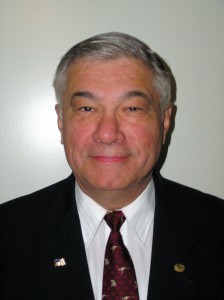
Dr. Phil Roberts, president of PAR Travel Tech Inc., and former director of corporate travel at Ford Motor Co., believes that smaller companies will catch on to what larger companies have done and integrate travel and aviation departments.
“That includes learning about things that we don’t like or wouldn’t like to have happen,” he said. “Being informed and alert allows us to be better prepared to make sound judgments for travelers. In fact, I’ve been trying to elevate these very issues to a leveling of education and training for travel executives and managers.”
He added that now more than ever, the industry needs to focus issues on “the peripheral and indirect items that affect the business travel management effectiveness and decision competence.”
A 35-year aviation specialist, Roberts has a wide range of active piloting experience, as an instructor, test pilot, military and FAR Part 135 pilot. He’s also associated with the NBAA, NBTA, American Institute of Aeronautics & Astronauts, Technology Transfer Society, Aviation Director’s Roundtable and ACTE.
Roberts agrees that some people on the travel management side may not like his opinions and considers them to be controversial, but he believes sometimes you need a little controversy, if things are to change. A lot of travel executives favor the travel department taking on the leadership role, if the travel and aviation departments are integrated. But he says that’s not the trend.
“Lately, the trend has been to give the leadership position of the overall function to the aviation department leader,” he said. “They’re closer to the senior management, their travel patterns, and the needs of the overall company travel overseas. I’ve been an advocate for much greater training opportunities and exchange of info between the professional organizations on both sides.
“To date, the NBAA has responded with personnel and booths at the professional travel association meetings, but I’m not aware of the inverse yet. The NBTA has provided peripheral training on the subjects of chartering aircraft, but not training at the certification level for this important exchange/interface area. So, there’s much to be done for the good of the professionals in both functions.”

Don Draves, corporate services manager of the Miller Brewing Co., believes new lightweight aircraft will serve travelers of smaller secondary airports at a lower cost, avoiding the traditional “hassles” of larger main-line airports.
Don Draves, corporate services manager of the Miller Brewing Co., offers unique insight into the behind-the-scenes corporate GA world. Like Roberts, he also has experience in both corporate aviation and travel management, and is chair of the Wisconsin Business Travel Association and a member of the NBTA’s legislative advisory council.
“In my opinion, the world of aviation is going to see some substantial changes over the upcoming years, along with potential commercial airline mergers and alliances,” he said. “Some commercial airlines may disappear altogether, thereby putting pressure on finding commercial flights that meet the needs of business travelers. The airlines have reduced capacity to maximize seating (load factors), which could also result in expanding the use and mission of corporate aircraft departments.
“Several aircraft manufacturers are now producing lightweight composite aircraft, which are more fuel efficient and safe; many are specially sized and designed to enhance corporate aviation departments. Some venture capitalists are developing air-taxi programs, to provide business travelers an alternative to commercial aviation by flying into smaller secondary airports for a lower cost, and avoiding the traditional hassles of larger main-line airports. If this does come to fruition, it will be yet another twist for the business travel departments and corporate aviation departments to investigate and manage.”
Carol Devine, chair of the NBTA, highly recommends integration of the travel and aviation departments. But she agrees with Roberts that the aviation department should take the leadership roles in the operation of corporate aircraft.
“They’re responsible for maintenance scheduling, and important aircraft compliance issues, as well as conforming to Federal Aviation Administration standards,” says Devine, who oversees $100 million in travel at The Burlington, Northern and Santa Fe Railway Company, as its director of strategic sourcing.
Devine believes that for the sake of the business traveler, a travel department can be “a one-stop-shop” for executives or for corporate travelers using GA aircraft, as well as commercial travel services. She said that if both the travel and aviation departments didn’t work harmoniously, the result would be lost value to companies and disservice to personnel.
“Corporate travelers often fly in both corporate and commercial aircraft, as a portion of the same trip,” she said.
How popular is GA charter?
Gurley says charters are becoming relatively infrequent for executives.
“Fractional aircraft time-shares, in which a corporation can buy into the benefits of a corporate aircraft for as little as 100 hours a year, are more common,” she said. “The point of contention here is aircraft availability to support the mission of corporate leadership.”
Fractional ownership programs increased from 865 aircraft to 949 aircraft in 2005 (a 9.7 percent increase). The numbers of companies or individuals that own a share of an aircraft in 2005 was 4,691, a 5.5 percent increase over 2004, according to JETNET.
Coyne says generalizations are difficult.
“Our Part 135 charter members are very bullish in all segments; CEO travel hasn’t declined in charter, even as 91-K (fractional) has grown,” he said. “Charter is very cost effective, especially for same-day, overnight round-trips and multi-stop road shows. Also, charter provides tremendous supplemental life capacity for the fractional providers. Charter is also picking up more and more shuttle-type service, including across the North Atlantic.”
Statistics from GAMA prove that overall GA is being used more often. According to GAMA, the GA industry reached an all-time high for billings in 2005; the total of $15.1 billion was a 27.2 percent increase over the 2004 amount of $11.9 billion. Worldwide shipments of GA aircraft totaled 3,580 units for 2005, up 20.8 percent over the 2004 total of 2,963 units.
According to the Teal Group’s annual forecast, a total of 7,400 advanced business jet aircraft, valued at $107 billion, will be produced between now and 2014. They forecast fractional ownership to account for 40 percent of the 7,400 jets, and that about 1,300 of the aircraft will be very light jets, to be used for corporate or Part 135 operations. Some of the VLJs will be owner-operated.
Coyne is confident that the VLJ market will further boost GA.
“Absolutely, these new aircraft are all factors in newly developing air charter business models,” he said. “For example, DayJet has an entirely different view of how a national charter network can serve second-tier markets.”
DayJet CEO and President Ed Iacobucci plans to reshape the future of business travel with his “per-seat, on-demand” jet service, just as soon as the Eclipse 500 VLJ is certified.
Coyne, an experienced pilot and owner of a King Air, said new aviation technologies will help revolutionize the industry with a class of affordable and efficient jet aircraft, which will become part of new charter models.
“Many new charter operators are using Cirrus, Pilatus, TBMs (Socata), and other relatively new aircraft models,” he said. “The makeup of the fleet is definitely changing, and a buyer of air travel has to do his or her homework to stay informed. The good news, though, is that the media is doing a better job of bringing awareness of these new planes to their readers than ever before.”
What’s a better deal for companies, charter or fractional aircraft? Coyne says it totally depends on your level of operation and how and where you fly.
“Flights with deadheads, such as delivering passengers to a vacation destination, then picking them up two weeks later, are different; sometimes the fractional operator’s higher price is offset by no deadhead charge,” he said. “Unless the charter operator can fill the deadhead (one-way) legs, their total cost may be higher. Generally speaking, charter is the better deal for the vast majority of users, especially those who only fly occasionally and have a charter operator based nearby.
“As for companies integrating their corporate aviation and travel departments, certainly more companies will do so, if only because they understand that business aviation is much more essential than ever before. But I doubt that this will occur 100 percent across the board, since it takes time to overcome inertia, and there are obviously many who are resistant to change.”
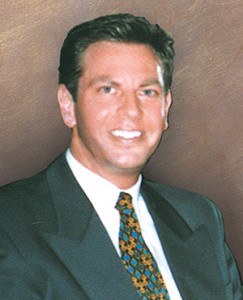
Wayne J. Rizzi, president and CEO of Air Royale International, said 85 percent of ARI’s business is comprised of corporate charter, and that people can obtain one-way flights without paying for repositioning fees, which makes charter efficient.
Wayne J. Rizzi, president and CEO of Air Royale International, says his air charter brokerage business has changed over the last 12 years, but for several years has been comprised of 85 percent of corporate business, including CEOs of Fortune companies and company teams across the board.
“We see that situation in all of our offices—Los Angeles, New York, London and Hong Kong,” says Rizzi, who is a member of both the NBAA and the NBTA. “I understand the struggle on both sides; integrating the aviation and travel departments is going to be a challenge. But in all of our office locations, we’re dealing with quite a few companies that don’t have in-house flight departments. We’re dealing with the corporate travel department to procure charter on their behalf. Chartering aircraft is very affordable, much more so than commercial carriers, in many cases.”
Rizzi said he doesn’t believe there’s an issue with cost versus value with their clients, especially when travel managers understand they can obtain one-way flights without paying for repositioning fees.
“Both the corporate Part 91 departments and travel departments use our proprietary database that allows this type of search,” he said. “It’s used more often than people realize. That makes charter even more affordable. Companies or individuals utilize air charter brokers’ vast networks of the world’s top charter operators; they have more options from which to choose.”
Rizzi credits the top charter brokers in the country for driving the charter market.
“We know which operators are the most reliable,” he said. “We know which operators provide the best service, keep the best maintained aircraft, and employ the safest and most qualified crews globally.”
Being able to understand the travel needs of companies and individuals is important.
“Whether it’s the travel manager, the aviation manager or an individual needing a charter, they need to know you can help them decide which aircraft type they need,” he said. “Cost is a factor, so maximizing utility to fulfill a travel mission is vital. For example, if someone needs a Learjet 60, a Citation X or a GV, they all have different interior configurations and flying range capabilities. The standard or upgraded avionics will be different, etc. You don’t just use ‘any’ jet; the right aircraft has to be matched to the right mission.”

Stephanie Chung, Bombardier Skyjet’s national sales director, said CEOs are realizing that utilizing GA charter options for other personnel, rather than automatically booking commercial flights, can boost companies’ bottom lines.
Stephanie Chung, Bombardier Skyjet’s national sales director, said the decision comes from the top, if companies are going to utilize GA for its personnel. She said CEOs are realizing that utilizing GA charter options for other personnel, rather than automatically booking commercial flights, can boost company bottom lines.
“One of our clients in the financial industry has really done this well, as their CEO is a firm believer that they have a better chance at closing the deal, if they can get in front of the customer first,” she said. “The aviation department handles the schedule and usage of the company’s jets top management flies on, but the travel department handles schedules and usage of charter services for other executives who meet with customers to close business. Consequently, this company’s business has grown off the charts, thus the attitude of their employees is amazing. This CEO has done it right, as he was the initiator of the process!”
She said saving money wasn’t the only factor driving the CEO’s decision to use charter aircraft for mid-level employees instead of using the airlines.
“The CEO appreciated the value of his executives’ time and quality of life issues for all of his employees,” she said.
Bombardier Skyjet offers a prepaid jet card program. Other block-hour charter jet cards under the Skyjet name include the Learjet Card and the Challenger Jet Card.
Prepaid jet cards are more popular with corporate travel managers than they are with Part 91 in-house flight departments, as aviation directors usually have vast knowledge about aircraft and know exactly what type they need.
“Typically, aviation managers prefer the pay-as-you-go, traditional on-demand charter route, which is less expensive,” said Rizzi. “Although we don’t sell jet cards or membership programs, we do offer block-hour programs, but we never require money up front. I think travel managers will see the economics in not having to leave deposits.”
On the other hand, Chung explained that travel managers like jet cards, because it’s simple for them to subtract used hours; when hours run low, they buy more. Skyjet also offers on-demand charter business jet travel in North America, and its sister company Skyjet International, offers programs throughout Europe, Asia and the Middle East.
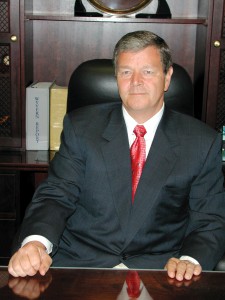
Walter D. Lamon, president and CEO of Wyvern Consulting Ltd, says chartering aircraft domestically or internationally has become a way of life, as the airlines fail to provide efficient service overall.
Walter D. Lamon, president and CEO of Wyvern Consulting Ltd., which has performed more than 1,500 FAR Part 135 audits worldwide on behalf of companies that use charter operators, says charter business has increased.
“It’s zooming,” he said. “Of course, chartering aircraft domestically or internationally has become a way of life, as the airlines fail to provide efficient service overall. But a lot of companies employ personnel in rural areas who don’t have access to commercial airports, so chartering aircraft for those employees is vital. It’s also used to transport personnel to commercial airports to catch other domestic or international connections. Thousands of people working in mid-sized corporations to large Fortune companies are able to fly on company-owned airplanes, use on-demand charter, jet card or membership programs.”
He said charter of helicopters is also vital.
“In February, I attended the Helicopter Association International’s Heli-Expo 2006, which had its biggest year ever,” he said. “Sales contracts exceeded $620 million among major manufacturers. The use of helicopters in the U.S., the UK, China, the Middle East, and all over the world has proved a viable mode of transportation.”
Lamon offers up one more caveat: there might be another reason that we’ll see more use of GA—soon.
“If companies’ boards of directors squirmed when Sarbanes-Oxley took affect, the SEC has a doozie coming up,” he laughed. “In late January, the SEC published a 370-page ‘Executive Compensations and Related Party’ new ruling proposal (File No. S7-03-06). Among its many tiers of stiffer governance of corporations and its leaders, there’s a key phrase: ‘if not generally available to employees on a non-discriminatory basis.’ So, CEOs could be under fire for using private aircraft, if other personnel don’t get to use it, too.
“As for Enron, not only did their actions bring on SOX, and the issues of business ethics, but as a result, it helped to showcase GA. Their in-house Part 91 flight department was also called into question. We audited Enron’s flight department, which failed to meet our standards. As other corporate flight departments knew of this, they started cleaning up their own operations, and as a result, they helped set the bar of safety, and expected charter operators to have the same high standards. That boosted GA overall; a strong safety message was employed, and the public starting hearing about that, so more people used charter. Keep in mind that charter operators are flying companies’ or individuals’ aircraft under their FAA 135 certificates.”
Lamon says no matter how you look at travel options, GA has become part of mainstream society.
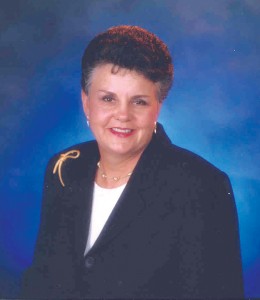
Carol Devine, chair of the National Business Travel Association, is a firm believer that a travel department can be “a one-stop-shop” for the business traveler.











